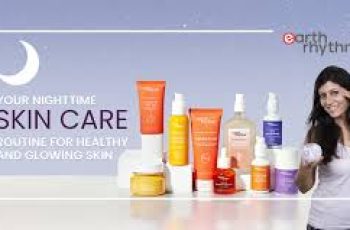
Cheek Acne 101: Root Causes & Ways To Treat It At Home
While most of us know that chin acne is associated with hormonal fluctuations and forehead acne is thought to be related to stress, it can be difficult to pinpoint what causes cheek acne. In general, all acne results from a combination of clogged pores, excess oil, and dead skin, but where these breakouts happen on the face can sometimes offer clues about what’s contributing to this combination.
Read on to find out more about what cheek acne is, how to treat it at home, and tips on cheek acne prevention.
Causes of Cheek Acne
From genetics to your cell phone, there are a number of potential triggers for cheek acne.
Causes of cheek acne:
Genetics: If your mom or dad had acne on their cheeks, you may develop acne there too. In some cases, your genetics determine how your oil glands function (or overfunction). It is estimated that 50 to 90 percent of acne cases are inherited.1
Dirty makeup brushes: If you can’t remember the last time you washed your makeup brushes, they may be teeming with acne-causing bacteria. According to the American Academy of Dermatology, dirty makeup brushes also collect product residue, dirt and oil, which can compromise your complexion and your overall health.2
Not changing your pillowcase enough: Like your makeup brushes, pillowcases can also carry acne-causing bacteria along with dust, pollen, and other allergens that can irritate your skin.
Talking on the phone: You may want to start going hands-free if you hold your phone up to your face often, especially if that’s where you’re noticing the most acne. Not only does your cell phone carry bacteria and dirt, but studies show the light and heat emitted from these devices may increase the proliferation of Staphylococcus aureus and induce acne flare ups.3
Harsh makeup products: In some cases, it’s not the dirty makeup brushes that cause breakouts, but the makeup itself. This type of acne is called acne cosmetica, which may appear as tiny white bumps or whiteheads.4
Touching your face: Touching your face is something we all do from time to time, often without thinking about it. While this habit won’t necessarily cause acne, it can exacerbate acne that you already have. This is especially true if the type of touching you’re doing is picking and popping at lesions. This increases inflammation and makes blemishes take longer to heal.
High sugar intake: According to Dr. Amanda Doyle, MD, a dermatologist and member of the Women’s Dermatologic Society, there’s a possibility that cheek acne can be a sign of high sugar intake.5
Understanding Your Skin
Most people are familiar with the idea that oily skin is more to acne. After all, breakouts occur when oil along with debris and dead skin cells clog pores and lead to inflammation.
The truth is, dry skin can also be vulnerable to acne. Because dry skin lacks moisture, it can trigger the glands to produce more oil, leading to breakouts. Then there are external contributors like those mentioned above–harsh skincare products, lifestyle habits, and more.
Understanding your skin type and your particular triggers will help you devise a customized skincare routine that works best for your needs and helps to keep acne breakouts at bay. It’s also worth noting that your skin type may change throughout the year when the seasons change.
Treating Cheek Acne at Home
Taking charge of cheek acne doesn’t always require a trip to the dermatologist. Establishing a proper cleansing routine, making small changes to your lifestyle, and incorporating targeted ingredients can make a significant impact. Read on to find out more.
Cleansing and Skincare Routine
If you have acne-prone skin, you should avoid harsh cleansers containing alcohol at all costs. Opt for a gentle cleanser and use it twice a day, making sure to remove makeup thoroughly before bed.
Along with using an oil-free moisturizer which contains a hydration-boosting humectant like hyaluronic acid, you will want to incorporate targeted ingredients into your routine that are clinically proven to reduce acne, such as niacinamide, vitamin C, and azelaic acid. Learn more about them below.
Targeted Ingredients
Foundation Skincare offers a full collection of dermatologist-formulated solutions for common skin conditions like acne, hyperpigmentation, and premature aging.
The following six ingredients are must-haves in your skincare routine for cheek acne prevention and treatment:
Foundation Skincare Azelaic Acid 14% Cream: Naturally found in grains like barley, wheat, and rye, azelaic acid has potent antimicrobial, anti-inflammatory, and antioxidant qualities. It reduces bacteria on the skin, helping to heal current breakouts and prevent them altogether. The FS formula contains a medical-grade concentration of the active ingredient, which is stronger than most over-the-counter options, but it does not require a prescription.
Foundation Skincare Niacinamide Lotion 10%: A powerful form of Vitamin B-3, niacinamide helps to maintain the skin barrier while decreasing the production of oil to prevent breakouts. Like azelaic acid, niacinamide also has anti-inflammatory properties, which eases redness, irritation, and subsequent scarring.
Foundation Skincare Vitamin C Lotion 20%: When applied topically, vitamin C helps to ease redness and swelling associated with acne blemishes and boost collagen production to support scar healing. Like the two ingredients above, vitamin C is also known to decrease inflammation and brighten skin without causing irritation.
Foundation Skincare Night Renewal Cream: Containing 2% Granactive Retinoid with essential peptide growth factors and plant-based botanicals, this nourishing cream prevents breakouts by unclogging pores and reducing oil secretion. It can also prevent acne scars by accelerating cell turnover.
Foundation Skincare Hyaluronic Acid Lotion: Dehydrated skin sends the oil glands into overdrive; hyaluronic acid keeps skin plump and hydrated by drawing in moisture and locking it in at the deepest layers.
Sunscreen: It should go without saying, but every last step of your morning skincare routine should be sunscreen. This is especially true for acne-prone skin, as excessive sun exposure can lead to skin dehydration, prompting your glands to become hyperactive.
Recommended routine for cheek acne:
Morning: After cleansing skin with a gentle cleanser and patting dry, apply Niacinamide Lotion 10% and moisturize with Hyaluronic Acid Lotion. Then apply a thin layer of Azelaic Acid 14% before you apply sunscreen.
Evening: After cleansing, apply Niacinamide Lotion 10%, followed by Vitamin C Lotion 20%, and then moisturize with the Night Renewal Cream.
Home Remedies to Soothe Cheek Acne
Following a solid skincare routine with targeted ingredients is crucial in promoting your skin health and preventing acne breakouts, but there are also a few other remedies you may want to consider:
Moisturize with aloe vera: Apply aloe vera to inflamed lesions to soothe the skin and accelerate healing.
Spot treat with tea tree oil: Dab tea tree oil on swollen pimples to reduce swelling and bacteria.
Take a zinc supplement: There is some evidence that taking a zinc supplement helps to ease inflammation associated with blemishes (and total blemish count) by supporting cellular function.6
Lifestyle Changes for Cheek Acne Prevention
Whether you know what’s causing your cheek acne or not, here are some general rules to consider to help prevent future breakouts:
Follow a daily and nightly skincare routine suitable for your skin type
Clean your makeup brushes regularly
Change your pillowcases regularly
Try not to hold your phone up to your face often (consider a headset or earbuds)
Resist the urge to touch your face
Stay hydrated
Follow a balanced diet of mostly whole foods, vegetables, and fruits
Reduce your sugar intake
Manage your stress levels
Wear sunscreen every day
When to see a Dermatologist
If you don’t take action, untreated acne may persist for several months, if not longer. If your acne is severe, you have visible scarring, or you suspect you have an underlying health issue, you may want to seek guidance from your dermatologist. Acne can be frustrating, but it doesn’t have to last forever. Find more tips and guidance on how to achieve clear and healthy skin in the FS Journal.


